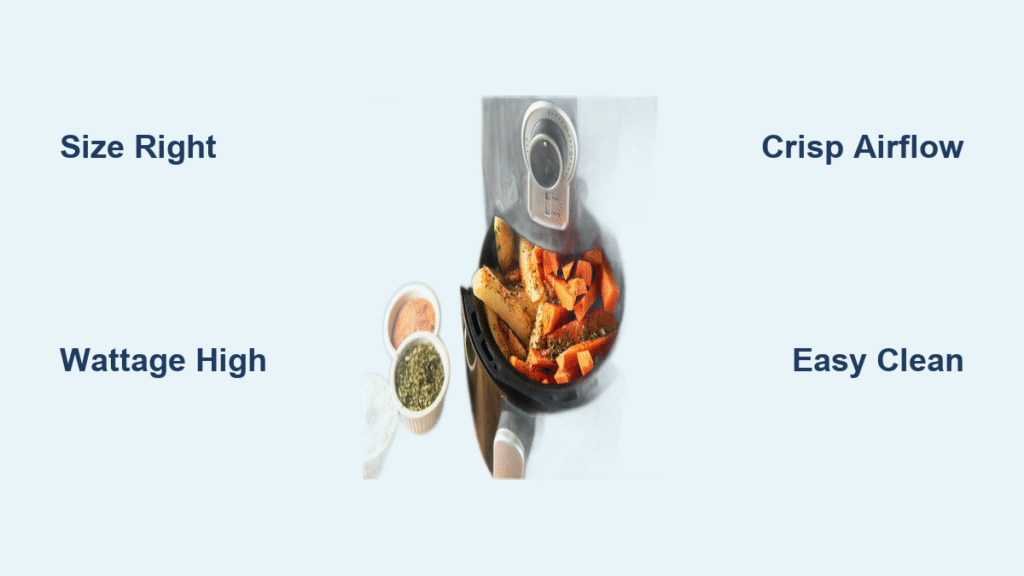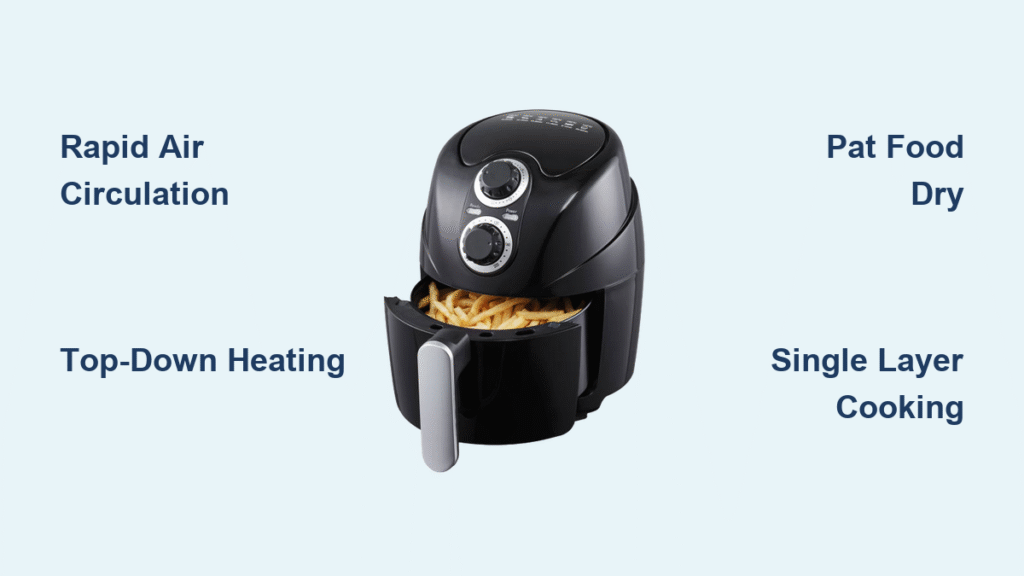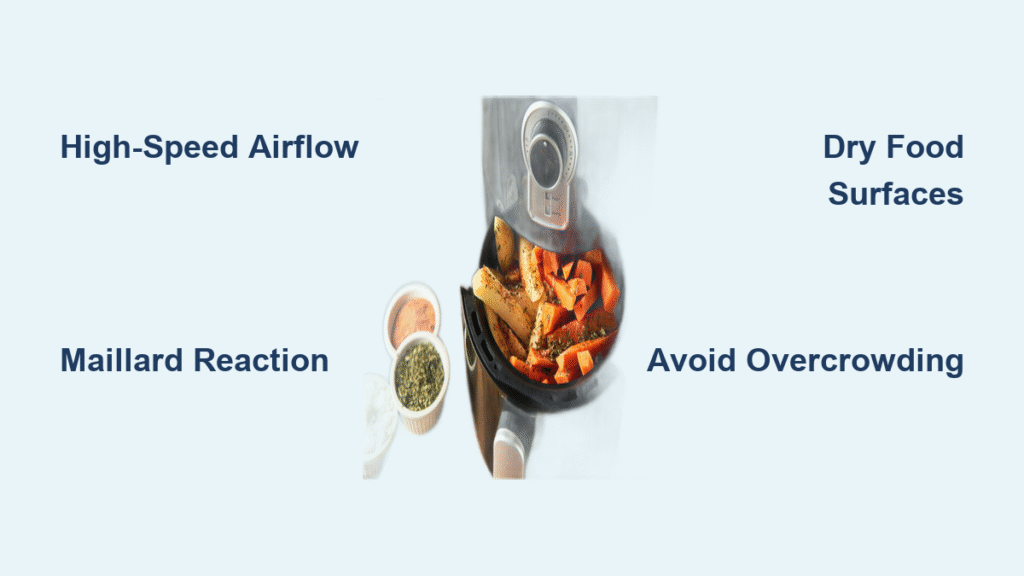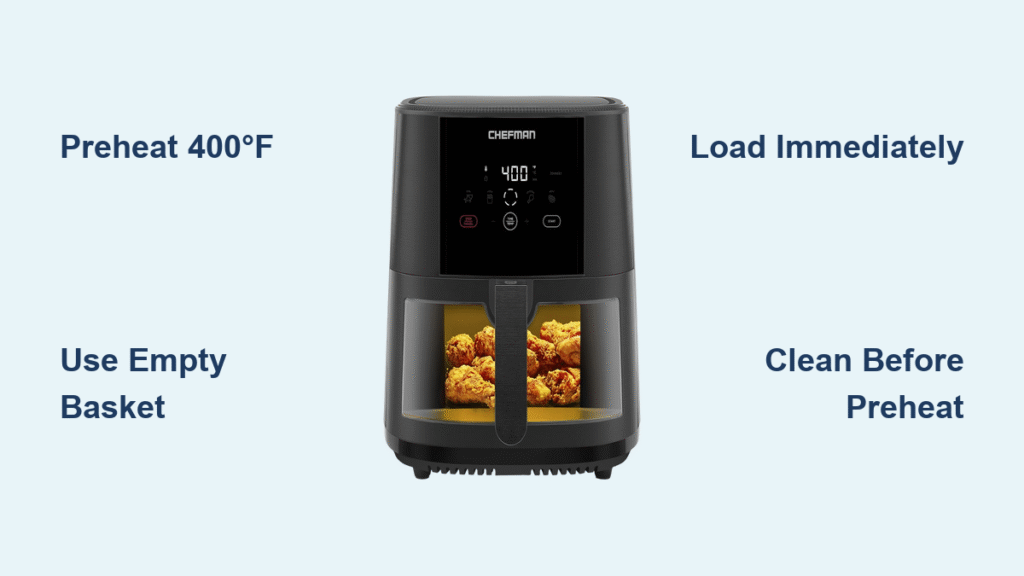Your frozen fries always emerge limp from the oven, and deep-frying makes the whole house smell like a fast-food joint for days. You’ve heard friends rave about their air fryers, promising crispy wings and golden veggies with barely a tablespoon of oil. But with dozens of shapes, sizes, and buzzwords crowding store shelves, picking the right model feels overwhelming. This guide cuts through the noise with actionable steps to choose an air fryer that matches your kitchen space, cooking habits, and budget—so you skip the buyer’s remorse and start making restaurant-quality meals tonight.
Unlike deep fryers that submerge food in oil, air fryers use a powerful fan and heating element to blast food with rapid hot air in a compact chamber. This creates that crave-worthy crunch with 70–80% less oil than traditional frying. But not all units deliver equal results. The wrong size leaves you running multiple batches, weak wattage yields soggy potatoes, and confusing controls turn dinner prep into a puzzle. By the end of this guide, you’ll know exactly which specs matter for your household and how to spot marketing fluff hiding mediocre performance.
Air Fryer Styles Explained
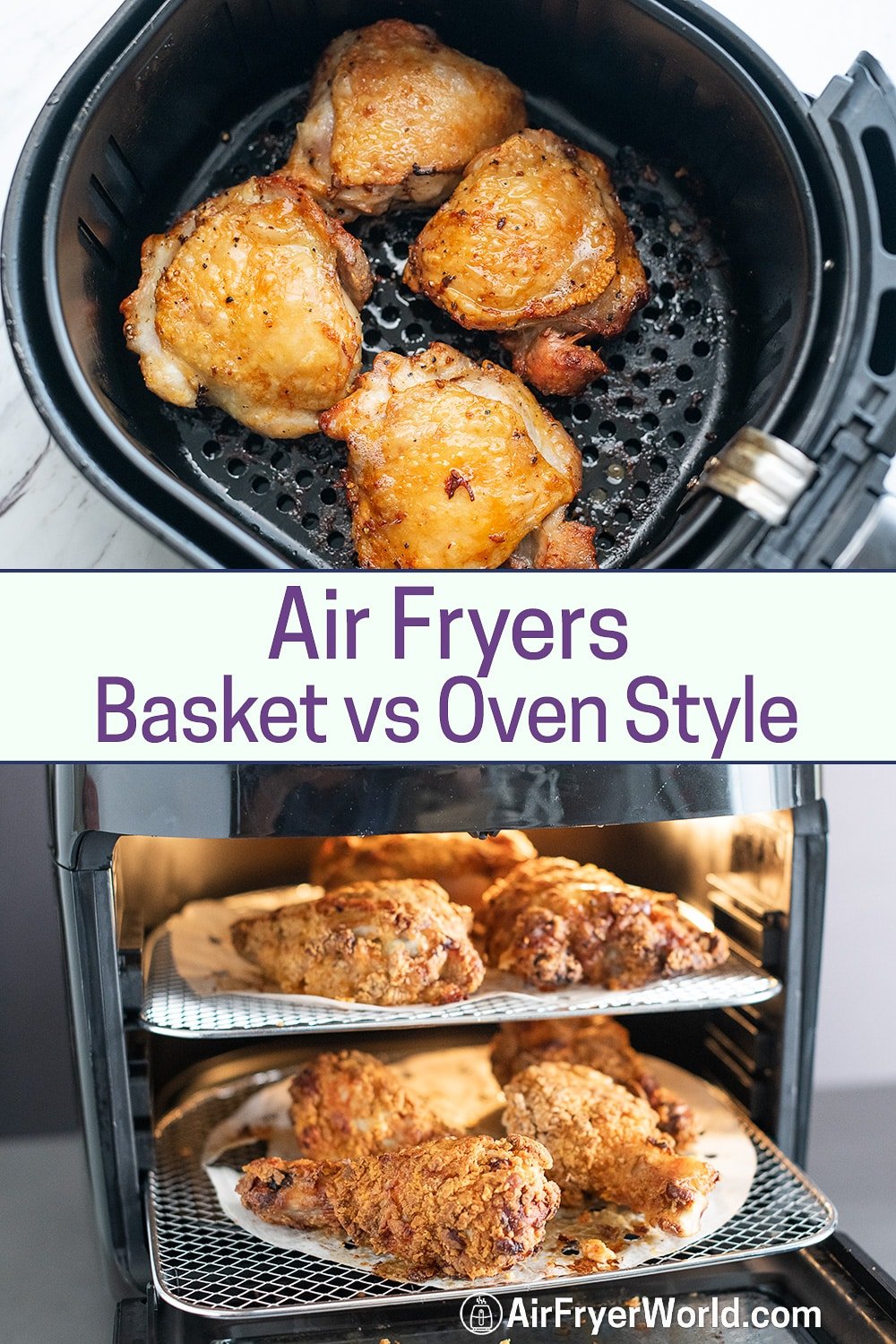
Basket vs Oven Formats
Basket air fryers dominate kitchens for good reason: their perforated drawers slide out like cash register trays, letting you shake fries mid-cook without losing heat. They pre-heat in 2–3 minutes and deliver intense, focused crisping perfect for wings or frozen snacks. But they’re single-taskers—if you want roasted broccoli alongside those wings, you’ll run two separate cycles.
Oven-style air fryers look like mini countertop ranges with mesh trays on rails. Their larger cavity fits a 9×13 casserole or whole chicken, and multi-level cooking means wings and veggies share the space. The trade-off? They need 5–7 minutes to pre-heat, take up more counter real estate, and their gentler airflow won’t give you that deep-fry crunch on small batches.
Dual-Zone Baskets
Ninja’s DualZone and Instant’s SyncFinish models split one unit into two independent baskets (4–4.5 qt each). Set one side to 400°F for wings while the other runs at 320°F for sweet-potato fries—the software syncs finish times so both are ready together. This is a game-changer for families, but each basket holds less than a single 6-qt drawer. Trying to fit a whole cut-up chicken? You’ll still need an oven-style unit.
Hidden Styles to Skip
Paddle fryers—those auto-stirring drum models—rarely appear in major lab tests and occupy awkward counter space. Unless you cook frozen stir-fry kits daily, skip these. Stick to basket or oven formats for reliable, versatile performance.
Size Your Air Fryer Correctly

Capacity Cheat Sheet
Manufacturers inflate capacity claims by 10–20%. Focus on usable space instead:
| People Served | Ideal Capacity | What Fits Inside |
|---|---|---|
| 1–2 | 2–4 qt | 1 lb fries, 2 chicken breasts |
| 3–4 | 5–6 qt | 2 lb wings, 12-cup muffin pan |
| 5+ or meal prep | 7–9 qt single or dual-zone | 4 lb roast, 9×13 lasagna (oven style) |
Pro tip: A 6-qt basket fits a 7-inch springform pan, but a 1 cu ft oven swallows a 9×13 dish. If you regularly cook for four, skip the “4-qt family model”—it’s a tight squeeze.
Measure Twice, Buy Once
Pull out your tape measure before ordering. Basket fryers need 4–6 inches of rear clearance for hot exhaust vents. Oven styles demand vertical space for door swing—measure under cabinets if yours sit low. Bring your most-used pan to the store; a Dutch oven that fits your oven might not slide into an air fryer cavity.
Power & Wattage Requirements
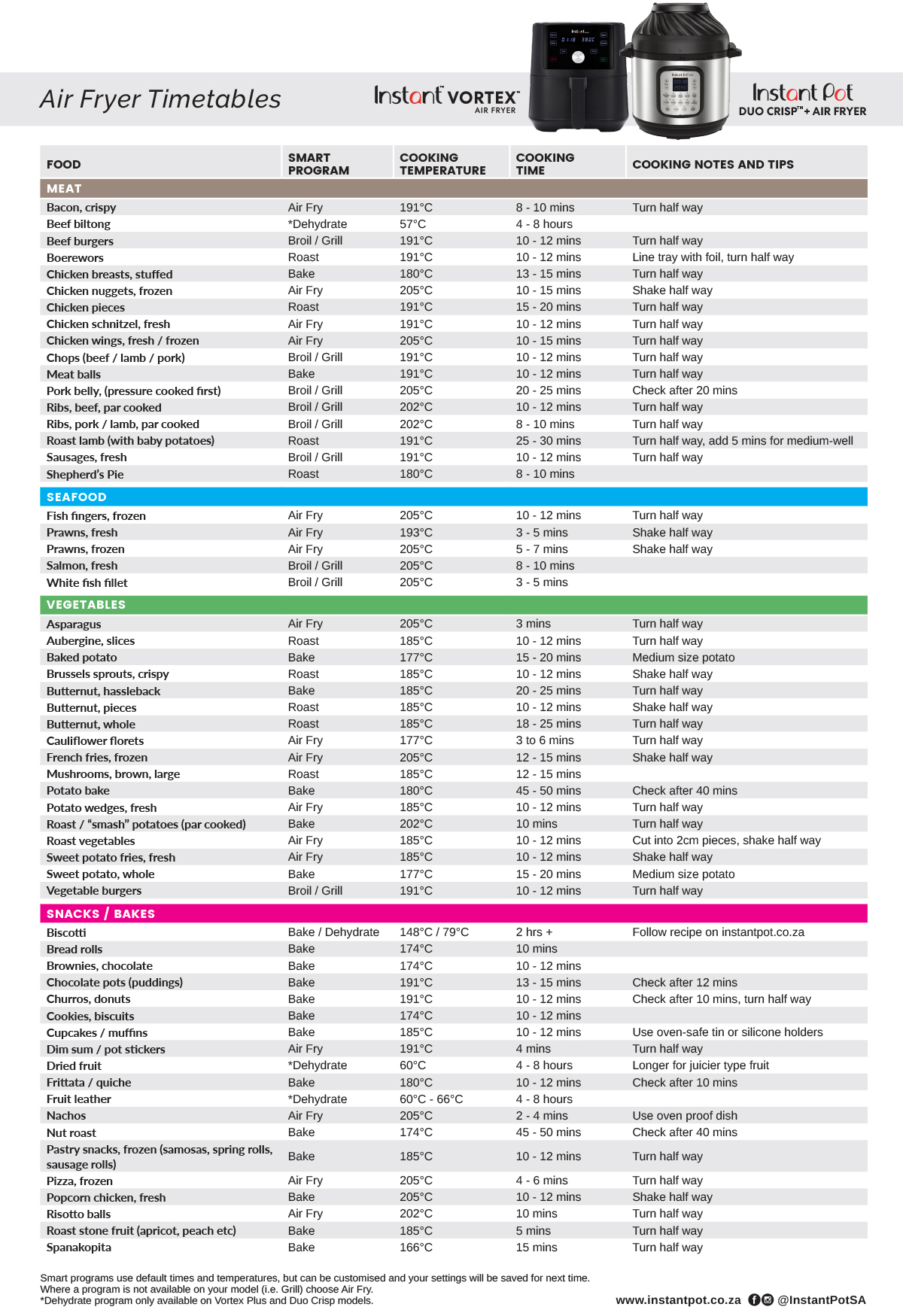
Minimum Effective Wattage
Bargain 1,000W units struggle to recover temperature after loading cold food, leaving you with unevenly cooked results. Lab tests confirm:
- 1,400W is the sweet spot for 2–5 qt baskets
- 1,600–1,800W is essential for 6–9 qt or oven styles
Higher wattage won’t spike your electric bill—faster cooking offsets the draw. A 20-minute cycle costs about 7 cents at average U.S. rates.
Even-Crisp Technology
Ignore vague terms like “advanced airflow.” Look for 360° vents or specific tech like “TurboCrisp” that pulls air from multiple angles to eliminate pale patches on chicken. If the spec sheet is silent on airflow design, skip it—this feature makes or breaks crisp consistency.
Control Panels Decoded
Dial vs Digital
Manual dials (twist-to-set) are fast but imprecise—you’ll guess at 380°F vs. 400°F. Digital touchscreens nail 1°F increments and store presets for fries or reheat. The best hybrids (like the Instant Vortex Plus) pair a scroll knob with an LED readout for tactile speed plus precision.
Preset Programs Worth Having
You’ll use Air Fry, Reheat, and Bake 90% of the time. Dehydrate or rotisserie modes are nice extras in oven styles, but weak broil presets (locked at 400°F for 2 minutes) rarely brown cheese properly. Prioritize these smart features:
– Shake reminders that beep midway through cooking
– SyncFinish for dual baskets cooking different foods
– MatchCook to mirror settings across baskets instantly
Multifunctionality Reality Check

When One Appliance Replaces Three
Oven-style air fryers bake muffins, roast vegetables, and reheat pizza without drying it out. If counter space is limited, a 1 cu ft model can retire your toaster oven and free up main oven space during holidays. But for pure crispiness on wings or fries, basket models still outperform.
Accessory Ecosystems
Check what ships in the box:
– Basket fryers usually include just the basket (maybe a mini rack)
– Oven styles often bundle a spit rod, pizza pan, crumb tray, and three wire racks
Third-party silicone mats cost $10–$20, but proprietary crisper pans run $35+. Factor this into your budget—cheap units often lock you into expensive accessories.
Cleaning & Maintenance Hacks
Daily 5-Minute Routine
- Unplug and cool for 10 minutes (never submerge the main unit).
- Remove basket/tray—dishwasher-safe if labeled, otherwise soak in hot soapy water 15 minutes.
- Wipe cavity walls with a damp microfiber cloth (avoid sprays near the heating element).
- Empty crumb trays in oven styles by tapping over the sink.
Never use abrasive pads—they destroy non-stick coatings in months. For stubborn grease, a soft brush after soaking works wonders.
Noise & Apartment Living
Decibel Guide
Most air fryers hum at 55–65 dB (conversation level). Instant Vortex models trend louder (~65 dB) due to aggressive fans; Breville’s Smart Oven Air Fryer Pro stays quieter at 55 dB. If you cook late in a studio apartment, scan reviews for “loud fan” complaints—some models sound like a jet engine during pre-heat.
Health & Cooking Nuances
Oil Usage Reality
A single teaspoon of oil sprayed on fresh potatoes yields restaurant crunch; frozen pre-fried foods (like store-bought fries) already contain oil—add none. Skip wet batters (they drip and burn), but dry breadcrumb coatings crisp beautifully.
Common Mistakes
- Overcrowding: Loads above ⅔ capacity block airflow, causing soggy bottoms
- Foil tents: Always weigh parchment or foil down with food or it flies into the heating element
- Ignoring pre-heat: 3 minutes of empty heat prevents sticking and speeds cook time by 15%
Price Tiers & When to Buy
2025 Retail Snapshot
| Segment | Basket Fryers | Oven Styles |
|---|---|---|
| Budget | $30–70 | N/A |
| Mid-range | $75–120 | N/A |
| Premium | $140–200 | $300–400 |
Best time to buy: Black Friday drops premium models 25–40%. Set price alerts—Instant Vortex Plus 6 qt dips from $150 to $90 every Prime Day.
Warranty Watch
Budget brands may offer only 60 days; most household names give 1 year. Breville and select Instant models extend to 2–3 years. Note: Warranties cover defects, not coating wear—so gentle cleaning still matters.
Quick Decision Matrix
| Your Need | Style & Specs |
|---|---|
| Solo lunches | 2–4 qt basket, 1,400W, digital presets |
| Family of four | 6 qt basket or 0.8 cu ft oven, 1,700W+ |
| Wings + sides same cycle | Dual-zone 8 qt, SyncFinish |
| Replace toaster & oven | 1 cu ft oven, 13 functions, fits 9×13 pan |
| Tight budget | 4 qt manual dial under $70 |
Pre-Purchase Checklist
- Measure counter depth + 6 in clearance for exhaust.
- List top 3 weekly foods you’ll cook (wings? veggies? reheating pizza?).
- Count typical servings per meal—don’t trust inflated qt claims.
- Check pan compatibility with internal dimensions.
- Confirm dishwasher-safe parts if you hate scrubbing.
- Scan noise complaints in reviews for thin-walled apartments.
- Note warranty length—avoid brands with <1 year coverage.
- Set a price alert; most models drop 20–30% quarterly.
By matching these specs to your real kitchen life—not marketing hype—you’ll land an air fryer that earns permanent countertop real estate instead of collecting dust in a cabinet. Crispy, golden results start with choosing right.

